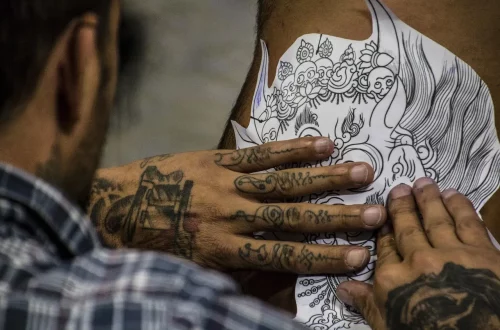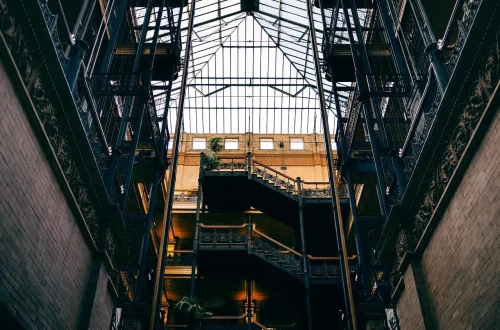
The Rise of Naked Men in Art and Fashion: A Bold Statement
The concept of nudity has long been a subject of fascination within artistic and fashion circles. Traditionally associated with themes of vulnerability, freedom, and raw human emotion, nakedness in art has evolved significantly over time. In contemporary society, the portrayal of the naked male figure has surged in popularity, reflecting broader cultural shifts towards body positivity, inclusivity, and the redefinition of masculinity.
While nudity can elicit a wide range of reactions, from admiration to controversy, its presence in art and fashion acts as a bold statement about societal norms and personal expression. This evolution showcases how artists and designers are challenging conventional standards, inviting audiences to engage in dialogues about body image, sexuality, and vulnerability. As we explore the rise of naked men in these fields, it becomes essential to understand the historical context, cultural implications, and the transformative power of such representations.
Historical Context of Male Nudity in Art
The depiction of the male form in art is not a modern phenomenon; it has roots that trace back to ancient civilizations. In Greek and Roman art, male nudity was celebrated as an embodiment of physical perfection and heroism. Sculptures like the “David” by Michelangelo exemplified the idealized male body, symbolizing strength and beauty. These representations were often tied to notions of masculinity and power, portraying men as warriors and gods.
However, the Renaissance marked a significant shift in how male nudity was perceived. It was during this period that artists began to explore themes of humanism, focusing on the individual and the emotional depth behind the figure. The naked male body became a subject of admiration, showcasing not just physical attributes but also a range of emotions. This nuanced representation paved the way for a deeper understanding of masculinity in art.
As time progressed into the 19th and 20th centuries, the portrayal of naked men continued to evolve. The Impressionists and later modern artists challenged traditional boundaries, experimenting with abstract forms and new techniques. This shift allowed for a more diverse representation of male bodies, breaking away from the classical ideals of perfection.
The rise of feminist movements in the late 20th century further complicated the discourse around nudity in art. Female artists began to reclaim the narrative around the human body, often juxtaposing their works with those of their male counterparts. This led to an increased awareness of how male nudity was presented and perceived, prompting a reevaluation of traditional power dynamics in art.
Today, the representation of naked men in art serves as a reflection of ongoing cultural conversations about gender, sexuality, and identity. As societal norms continue to shift, artists are increasingly embracing diverse portrayals of masculinity, challenging outdated stereotypes and inviting audiences to engage with the male form in new and meaningful ways.
Nudity as a Fashion Statement
In the realm of fashion, nudity has emerged as a provocative statement that challenges conventional styles and societal expectations. Designers and brands are increasingly embracing the naked aesthetic, using it as a form of rebellion against traditional fashion norms. This shift can be seen in runway shows, editorial spreads, and even everyday street fashion, where minimalism and transparency are celebrated.
One of the most striking aspects of this trend is the way it subverts the idea of clothing as a necessity for modesty. By showcasing the naked male body, designers encourage a sense of liberation and confidence, allowing individuals to embrace their physicality without the constraints of fabric. This approach aligns with the growing movement towards body positivity, where all body types are celebrated, and self-expression is encouraged.
Iconic fashion houses have taken daring steps to incorporate nudity into their collections. Celebrity endorsements and high-profile campaigns featuring naked men have sparked conversations about the male body and its representation in the fashion world. These campaigns often challenge traditional masculinity, presenting men in ways that emphasize their vulnerability and authenticity.
Moreover, the rise of social media platforms has amplified this trend, allowing individuals to share their own interpretations of naked fashion. Instagram influencers and models are using their platforms to promote body confidence, showcasing their naked forms in a variety of contexts, from artistic photography to everyday fashion choices. This democratization of fashion has led to a broader acceptance of nudity as a legitimate form of self-expression.
However, this bold embrace of nudity in fashion is not without its critics. Some argue that it can perpetuate unrealistic beauty standards or objectify the male body. Yet, proponents believe that when done thoughtfully, it can foster conversations about masculinity, self-acceptance, and the rejection of societal pressures.
As fashion continues to evolve, the naked male figure remains a powerful symbol of defiance, creativity, and self-exploration. By challenging the norms of clothing and presentation, designers and individuals alike are carving out a space for authenticity in a world that often prioritizes conformity.
The Cultural Implications of Nakedness
The rise of naked men in art and fashion is not just an aesthetic choice; it carries significant cultural implications. As society grapples with issues surrounding masculinity, vulnerability, and body image, the representation of naked males serves as a mirror reflecting these evolving dialogues.
In recent years, there has been a growing awareness of the pressures placed on men to conform to rigid standards of masculinity. The traditional ideals often emphasize strength, stoicism, and emotional restraint, leaving little room for vulnerability. By showcasing naked men, artists and designers challenge these stereotypes, presenting a more holistic view of masculinity that includes emotional depth and authenticity.
This cultural shift is particularly important in the context of mental health. As men face increasing societal pressures, the art and fashion industries have a unique opportunity to normalize discussions about emotional well-being. By portraying naked men in vulnerable positions, they encourage conversations about mental health, allowing men to express their feelings without fear of judgment.
Furthermore, the acceptance of nakedness in art and fashion can promote a broader understanding of body positivity. By celebrating a range of body types and representations, these fields challenge narrow definitions of beauty. This inclusivity empowers individuals to embrace their own bodies and fosters a sense of community where diversity is celebrated.
Moreover, the cultural implications extend beyond the individual level; they can influence societal norms as a whole. As the portrayal of naked men becomes more mainstream, it has the potential to reshape attitudes towards masculinity and vulnerability, encouraging a more compassionate and accepting society.
In a world where body image issues and mental health challenges are prevalent, the rise of naked men in art and fashion serves as a bold statement advocating for change. It invites us to reconsider our perceptions of masculinity and encourages a more inclusive dialogue about self-expression and acceptance.
Conclusion: Embracing Vulnerability and Redefining Masculinity
The rise of naked men in art and fashion represents a significant cultural shift that challenges traditional notions of masculinity and body image. Through historical context, contemporary fashion statements, and cultural implications, it becomes clear that these representations are not merely about nudity; they are about embracing vulnerability and redefining what it means to be a man in today’s society.
As artists and designers continue to explore the naked male form, they encourage audiences to engage in meaningful conversations about identity, self-acceptance, and the complexities of masculinity. The bold statements made through these representations serve as a catalyst for change, inviting individuals to celebrate their bodies and express their true selves without fear of judgment.
In conclusion, the rise of naked men in art and fashion is a powerful reflection of our evolving societal norms. By embracing vulnerability and challenging stereotypes, we can foster a more inclusive and accepting world where all individuals feel empowered to express themselves authentically.
**Disclaimer: This article is not intended as medical advice. For any health-related concerns, please consult a qualified healthcare professional.**




